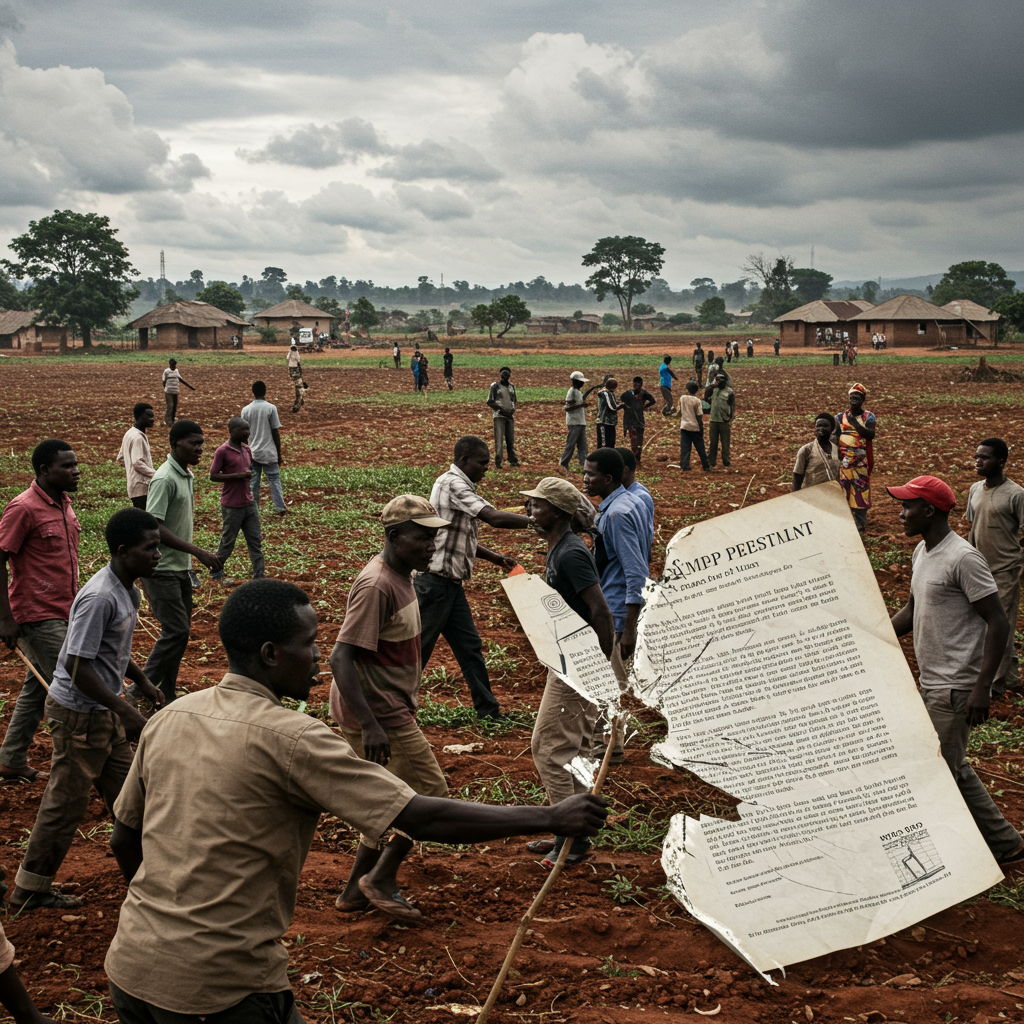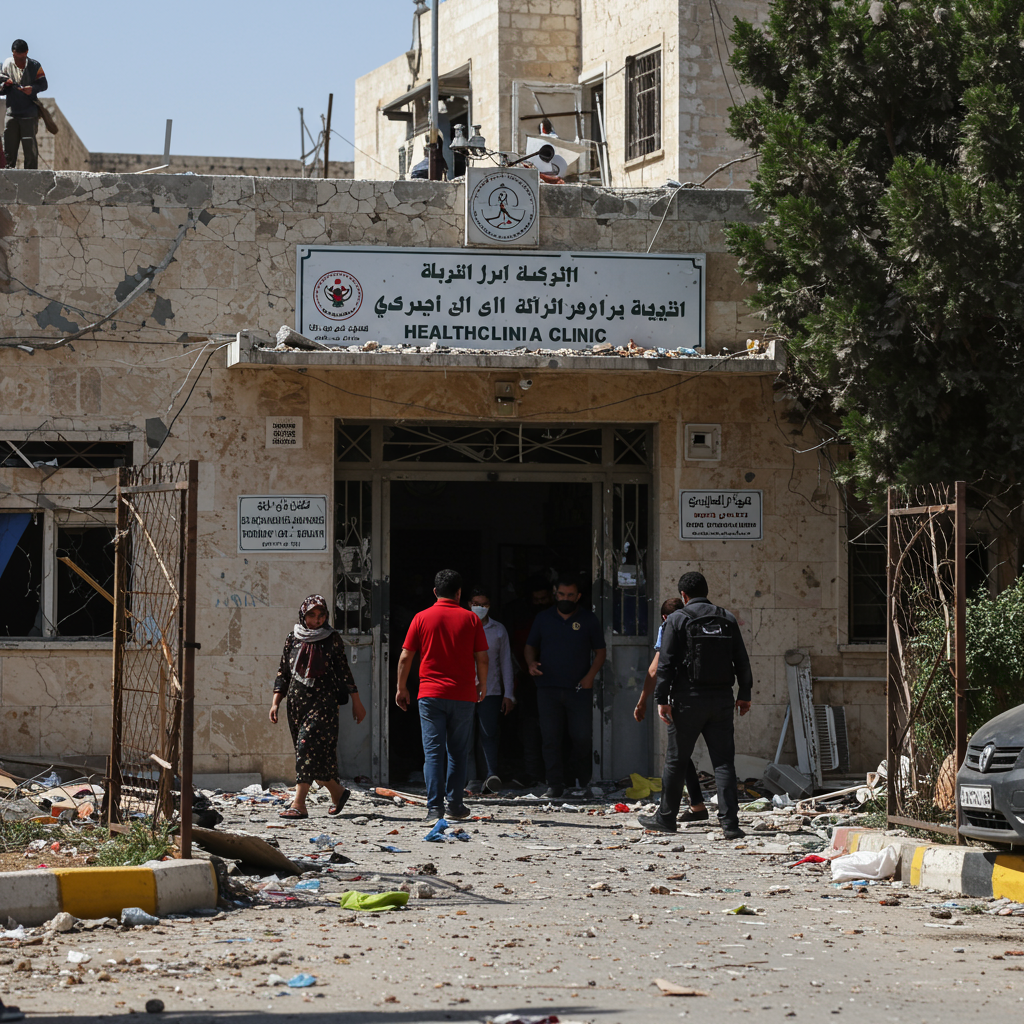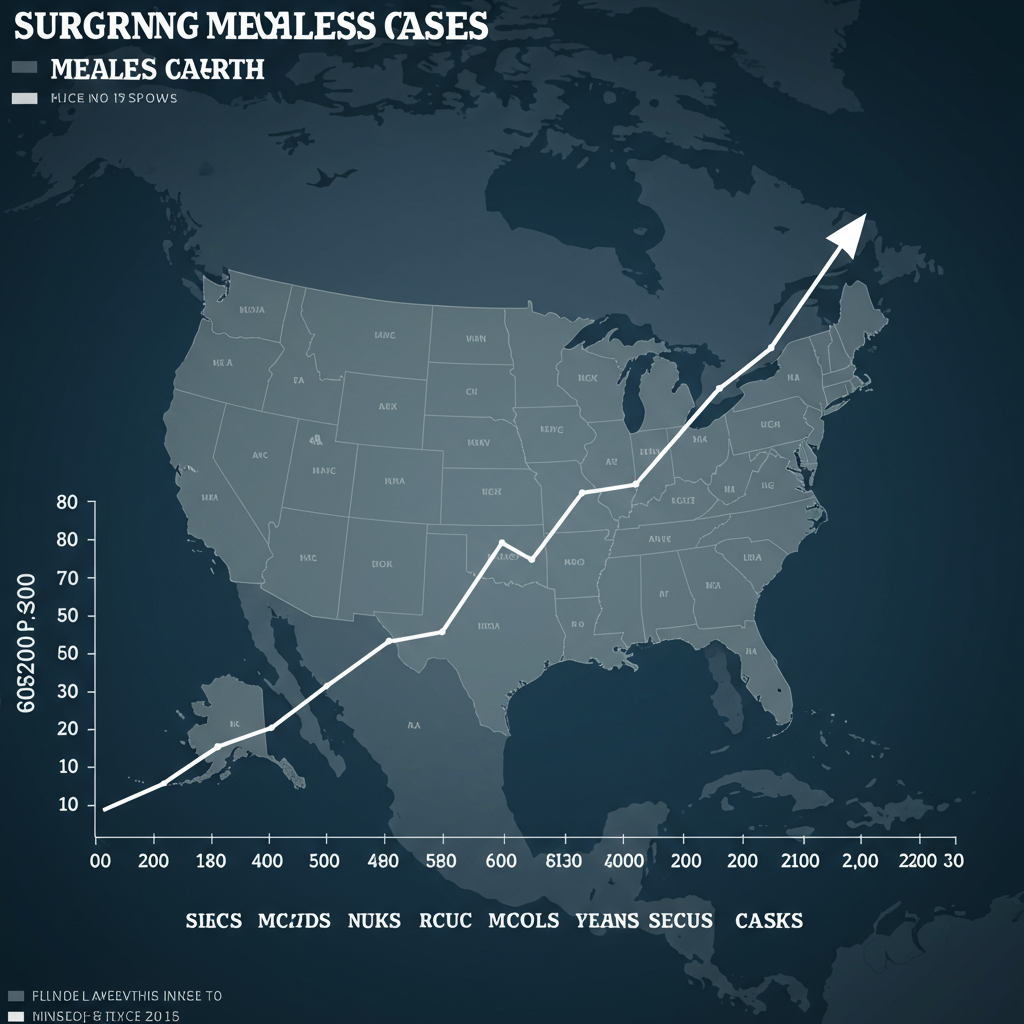Escalating land disputes in eastern Democratic Republic of Congo (DR Congo) now pose a significant threat to a fragile US-brokered peace agreement. This critical situation complicates efforts to stabilize a region ravaged by decades of conflict, where the M23 rebel group’s resurgence has displaced hundreds of thousands and exacerbated deep-seated ethnic tensions. As returning farmers find their fields occupied by newcomers, including alleged Rwandans, the very foundation of reconciliation is challenged, risking a fresh wave of violence in a territory rich in strategic minerals.
Unpacking the Peace Deal and its Fragility
A US-brokered peace deal, initiated by the Donald Trump administration, was signed in Washington in June 2025. This agreement brought Rwanda and DR Congo to the table, aiming to curb regional hostilities. The deal specifically demanded that Rwanda cease supporting armed groups and disengage its forces from Congolese territory. However, a significant omission has drawn criticism: the M23 rebel group, central to the ongoing conflict, was not a signatory to this Washington accord. Separate peace talks between DR Congo and M23, mediated by Qatar, were anticipated to yield an agreement in August but have since faced delays, leaving a critical gap in the comprehensive peace process.
The Roots of Discord: Land, Identity, and Displacement
Eastern DR Congo has endured over 30 years of turmoil, a direct legacy of the 1994 Rwandan genocide. This brutal event saw 800,000 Tutsis slaughtered, leading to the exodus of roughly one million Hutus into DR Congo. This influx profoundly intensified existing ethnic tensions, making the Banyamulenge Tutsi community in eastern DR Congo feel increasingly vulnerable. The M23, a group predominantly composed of ethnic Tutsis, claims its purpose is to protect the rights of this minority, alleging that previous peace agreements, like the 23 March 2009 deal from which they derive their name, were never fully honored. Their recent advances have been swift, seizing major cities like Goma in North Kivu by January and Bukavu in South Kivu by February.
Farmers’ Plight and the M23’s Response
The human cost of this conflict is stark, with thousands killed and hundreds of thousands displaced. When civilians, like Abdu Djuma Burunga from Kibumba, attempt to return to their homes, they often face a devastating reality. Fields once tended with cauliflower and cabbage are now worked by strangers. Burunga, who fled three years ago, returned in April to find his house in ruins and his land occupied by individuals speaking Kinyarwanda, the Rwandan language. These newcomers, who reportedly drank beer with M23 combatants, exemplify the pervasive nature of the land problem.
The scale of these disputes is alarming. Unpublished United Nations data, reviewed by Reuters, documents hundreds of cases. A UN refugee agency survey from early 2025 revealed that approximately 10% of surveyed families in Goma, eastern Congo’s largest city, were unable to reclaim their farmland due to occupation. In an attempt to assert governance and restore order, the M23 has even established an “arbitration center” to mediate these land conflicts. However, the effectiveness and impartiality of such a system remain questionable, especially when new arrivals may be closely associated with the rebel group.
The Specter of Rwandan Involvement
The issue of land occupation by alleged Rwandans is a particularly sensitive and charged topic. Numerous reports, including one by UN experts in July 2025, present “overwhelming evidence” of Rwanda’s deep involvement, stating that up to 4,000 Rwandan troops have fought alongside M23. Furthermore, these reports suggest Rwanda’s army holds “de facto control of M23 operations” and is focused partly on “conquering additional territories” in the region. This is further substantiated by accusations from the US, UK, France, and DR Congo.
Rwanda consistently denies providing financial or military support to M23. However, its signing of the Washington peace deal complicates these denials. Kigali acknowledges deploying forces in eastern Congo, but maintains these actions are strictly for self-defense against the Democratic Forces for the Liberation of Rwanda (FDLR), a Hutu group active in eastern DR Congo, which Rwanda labels a “genocidal militia.” Congolese authorities, in turn, deny collaborating with the FDLR. This complex web of accusations and counter-accusations fuels regional instability and casts a long shadow over any peace efforts.
A Region in Crisis: Minerals, Conflict, and Humanitarian Toll
The ongoing instability in eastern DR Congo is intricately linked to its vast natural resources. The region is a global hotspot for critical minerals such as coltan, cobalt, copper, and lithium – essential components for modern electronics and green energy technologies. This mineral wealth, ironically, often fuels the very conflicts that destabilize the area. Various reports, including a UN experts’ report from December, accuse Rwanda of exploiting the conflict to illicitly loot minerals. This report specifically highlighted an estimated 120 tonnes of coltan being trafficked from M23-controlled areas to Rwanda every four weeks, an accusation Rwanda vehemently denies.
The Stakes: Critical Minerals and Regional Power Dynamics
The economic dimension of the peace deal is undeniable. Clauses within the Washington agreement focus on expanding trade and investment in “critical mineral supply chains” between Rwanda and DR Congo. This move follows earlier reports that Kinshasa offered the US access to its mineral resources in exchange for security guarantees. The immense value of these minerals creates a powerful incentive for external influence and conflict prolongation, as various actors vie for control over these lucrative assets, ultimately impacting global supply chains.
Unraveling International Peacekeeping Efforts
International efforts to bring peace to DR Congo have largely struggled. The UN peacekeeping mission, MONUSCO, present since 1999 with over 10,000 troops, faces widespread criticism from Congolese citizens who perceive it as ineffective. Despite its Force Intervention Brigade having successfully defeated M23 in 2013, President Tshisekedi deemed the mission a failure, requesting its departure by the end of 2024, although its mandate was extended. Similarly, a military force from the Southern African Development Community (SADC), deployed in late 2023, began withdrawing in April after failing to halt M23’s advance and suffering casualties. These repeated failures underscore the profound challenges of external intervention in a deeply entrenched conflict.
Navigating the Path to Lasting Stability
Addressing the intertwined issues of land rights, ethnic tensions, and external interference is paramount for any sustainable peace in eastern DR Congo. Experts like Fred Bauma, head of the Congolese research group Ebuteli, emphasize that “land conflicts can always fuel violence if they are not properly addressed and if state structures are not sufficiently strong and equipped to manage them.” He stresses that this issue must be a central component of any future “Doha agreements” or broader peace frameworks. Without a robust and impartial mechanism for resolving these deeply personal and culturally significant disputes, the seeds of future conflict will continue to germinate, threatening to unravel any diplomatic gains. True peace demands not just agreements between nations, but justice and security for the individuals on the ground.
Frequently Asked Questions
What role do land disputes play in threatening peace in eastern DR Congo?
Land disputes are a critical flashpoint that can reignite violence in eastern DR Congo. As hundreds of thousands of displaced persons return to their homes in M23-controlled areas, many find their land occupied by newcomers, including alleged Rwandans. These unresolved territorial claims, documented in hundreds of cases by the UN, create deep resentment and mistrust. The M23’s attempt at an “arbitration center” has not fully alleviated the tensions, as returning farmers often face long waits or resistance to reclaim their property, feeding a cycle of grievance that can undermine any peace efforts.
Who are the primary parties involved in the US-brokered peace deal concerning the DR Congo conflict?
The US-brokered peace deal, initiated by the Trump administration in June 2025, was primarily signed by the governments of Rwanda and the Democratic Republic of Congo. Notably, the M23 rebel group, which is a central actor in the ongoing conflict in eastern DR Congo, was not a signatory to this Washington agreement. However, separate peace talks between the Congolese government and M23, mediated by Qatar, have been ongoing, aiming to achieve a direct cessation of hostilities and a resolution with the rebel faction.
How do the ongoing conflicts in eastern DR Congo impact global critical mineral supply chains?
Eastern DR Congo is exceptionally rich in critical minerals such as coltan, cobalt, copper, and lithium, which are vital for global electronics and renewable energy industries. The persistent conflict, including the M23’s control over key areas, significantly disrupts and compromises the legitimate supply chains of these minerals. Accusations of illegal exploitation and smuggling, particularly involving Rwanda, suggest that the conflict itself is being leveraged to illegally profit from these resources. This instability directly affects global markets, raises ethical concerns about “conflict minerals,” and draws major powers like the US into diplomatic and economic interventions aimed at securing access to these strategic assets.




